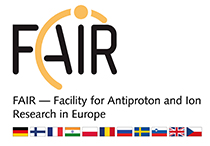Low-q experiments with an active target
Proton scattering or light particles scattering with low-momentum transfer provides important information on the structure of nuclei as well as on the Equation of State (EOS) for asymmetric nuclear matter. For example the nucleon density distribution of a neutron-rich nucleus can be studied by elastic proton scattering. Combining the information of proton-distribution radii determined by other methods, one can systematically study the thicknesses of neutron skins. A systematic change of neutron skin thicknesses along an isotope chain is a sensitive tool to study the EOS of neutron-rich matter and in particular the saturation density.
Also the nuclear density near the maximum of r2ρ(r) is sensitive to the saturation density of nuclear matter.
The N/Z ratio dependence of the saturation density of nuclear matter can therefore be studied from the systematic change of the nuclear density in a wide range of isotopes from the stability line to very neutron-rich nuclei. The cross section is most sensitive to the part of nuclei where r2ρ(r) has its maximum.
Therefore the measurement can be made with weak-intensity radioactive beams when an active target is used. Inelastic scattering with 4He target provides unique information on the incompressibility of the incident nucleus. The
incompressibility is also an important property of nuclear matter.
In such a measurement, a low-energy recoil particle has to be detected in coincidence with the forward-emitted residual nucleus to identify the reaction channel. The clear identification of the forward-going residual nucleus is inevitable. The part of the Super-FRS after a secondary target provides high particle identification power and thus it is most efficient to put an active target in the middle focus of the Super-FRS. It is considered to construct an active target, e.g. based on the design of the IKAR setup which was successfully used in the past for experiments on light halo nuclei, but with substantial improvements in performance.
For illustration, some important data obtained at FRS are shown in the graphics in which the obtained density distributions of 8He and 11Li are shown.
The application of an active target at the Super-FRS may profit from the fact that the scattered beam-like particle may be detected with a momentum resolution down to 10-4 in the Super-FRS section downstream of the active target. For the case of elastic proton scattering this will have the advantage that for the angular region where the light recoil particles are not stopped in the active target volume, but are only detected with much worse resolution via their energy loss signal, the high resolution detection of the scattered projectile will allow to cover this part of the angular distribution near the first diffraction minimum with higher resolution. As a pilot experiment one may consider to investigate the neutron skin in 132Sn by elastic proton scattering at 700 A MeV, which is on the one hand a case of most physics interest, and, on the other hand, due to its high lying first excited state around 4 MeV, a case where the separation of the excited states should be most feasible.
First simulations have shown that the energy resolution for the scattered projectile will not be affected by the energy straggling in the gas and the exit window of the active target for incident energies above about 600 A MeV.


